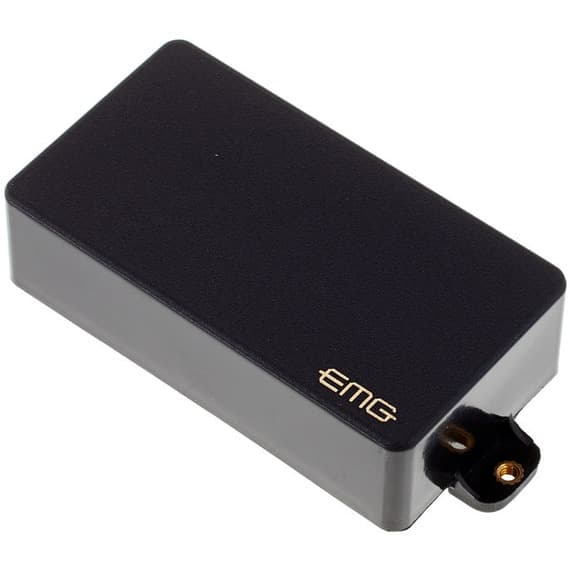If you’re trying to realign gravity through the metallic force of your riffs or navigating long-distant galaxies on a pilgrimage of sustain, then there’s a good chance you’ll be using pinch harmonics.
While there’s no arguing, vintage-style components can still add up to some glorious heavy tones, having pickups designed for metal and pinch harmonics come packing a more modern, high-output tone straight out of the box. Changing out pickups is non-permanent and one of the most affordable ways to upgrade your guitar: If done right, you can easily transform some average-sounding pinch harmonics into something a lot better.
Naturally, most pickups have their own merits – some being aimed at tight thrasher precision, while others, are brighter and abrasive to help cut through, and then there are pickups which cater to more organic warmth; giving almost as much musical on the clean channel as they are with high gain. So, if you’ve been thinking about a pickup change to ride the lightning or reign in blood, that’ll also help you to towards getting those killer pinch harmonics, then here is a short list of pickups that will help you out.
4 Best Pickups For Pinch Harmonics
EMG 81 Active Humbucker
EMG’s 81 Active Humbucker is a high-output pickup designed especially for the lead guitarist. First developed in 1979 along with the EMG-58. Like many EMG pickups, it wasn’t heavily advertised until 1981. The EMG-81 has the familiar U-shaped humbucking structure that replaces the pole pieces with steel bars and a smaller ceramic magnet. The EMG-81 is at its best when it’s being used as a high-volume overdrive. It has become the choice for many metal players alike, Kirk Hammett from Metallica and Kerry King of Slayer, to name only two.

Its distortion during lead passages is consistent while giving long sustain and the breakup fades smoothly. The ceramic magnet, in combination with wide aperture steel poles, provides a quick attack while the tone stays nice and fat at the same time. This pickup is perfect if you’re the only guitarist in the band, and need to switch from rhythm to lead and still keep the band moving. Another bonus for the EMG-81 is that it’s quiet. So, if you’re looking for exceptional qualities in a high-output pickup, the EMG-81 would defiantly be a good option as it’s also great for pinch harmonics.
Seymour Duncan SLSD-1 Li’l Screamin’ Demon
Seymour Duncan’s Li’l Screamin Demon is a moderate output single-coil-sized humbucker. It’s perfect for classic rock, jazz-rock fusion, heavy rock and aggressive, instrumental rock. Like its big brother the Screamin’ DemonGäó humbucker, this little savage combines a big, open sound with just a subtle hint of “glass.” This is a pickup that screams while providing rich harmonics, but clean-ups when backed it off.

Using a unique slotted and Allen head screw combination gives each coil a slightly different magnetic field, resulting in the tone being big and percussive without being too harsh.
Bare Knuckle The Mule Humbucker

Bare Knuckle’s Mule humbuckers are built and voiced as faithful reproductions of the best-sounding late ‘59 PAFs with a differing number of turns of vintage correct 42 AWG plain enamel wire on each coil. These pickups give outstanding clarity and extended dynamic range. Its solid nickel silver baseplate and cover are exact replications along with the butyrate bobbins, maple spacers, nickel-plated slugs and fillister no.5 pole screws. Sand cast Alnico IV magnets give The Mule a faster response in the bass, fuller mids, along with better control in the high end. Even when it’s at low levels of gain, the smooth harmonic feedback is great, full of overtones is possible, while clean sounds have depth and unmistakable vintage character.
DiMarzio DP159 Evolution

DiMarzio’s DP159 Evolution Neck and Bridge humbuckers are the result of two years of research to come up with the right sound for a very demanding player, Steve Vai. These pickups are designed for maximum impact and power. The neck pickup is punchy, fat, and loud. Its bridge pickup is tight, aggressive and louder. Both pickups have a patented dual-resonance configuration that produces more harmonic overtones than conventional humbuckers. These DiMarzio pickups are not polite-sounding, and they’re not for the inexperienced. The DP159 Evolution pickups were originally designed with live gigs in mind, but they have so much presence and definition that they’re great recording pickups, too, as they slice right through even the densest mix.
Which Pickups Should You Use For Pinch Harmonics?
Magnetic electric guitar pickups fall into two main categories: active and passive. Passive pickups are more traditional, fitted and usually soldered to the other components in the guitar. Whereas active pickups make use of their own preamp to give you a boosted and tone-sculpted output.
This requires powering from a 9-volt battery (housed in your guitar). Active pickups have become popular because of their consistent output and tone, reducing the variables from different guitar bodies. On the other hand, some players also find that active models produce a more compressed sound – not necessarily a bad thing, and really a matter of taste.
More recently, the lines between active and passive have started to blur, with more passive pickups aiming to produce the higher output, articulation and clarity of actives and certain active models aimed at players who prefer their sound to be less exaggerated or scooped.
It’s definitely recommended to look at your favorite guitarists to read as to why they swear by certain brands or which models were used on your favorite album. Anyone who has listened to bands like Slipknot, or Metallica, will already be familiar with the active ceramic pickup sets, and how they sound, dialling into apocalyptic levels of punch and distortion.
Many of the larger pickup companies offer samples and demos for comparison on their websites, which can come in handy for choosing the proper pickup for you.
The material of the magnet also plays a big part in the overall tone. For example, Alnico pickups – made with an alloy of aluminium, nickel and cobalt – are known for their smoother and more organic sound. While ceramic magnets are used for maximum output and aggression – perfectly suited for heavy tones, although they can be less impressive on cleaner settings as a result of the harmonic saturation and compression.
